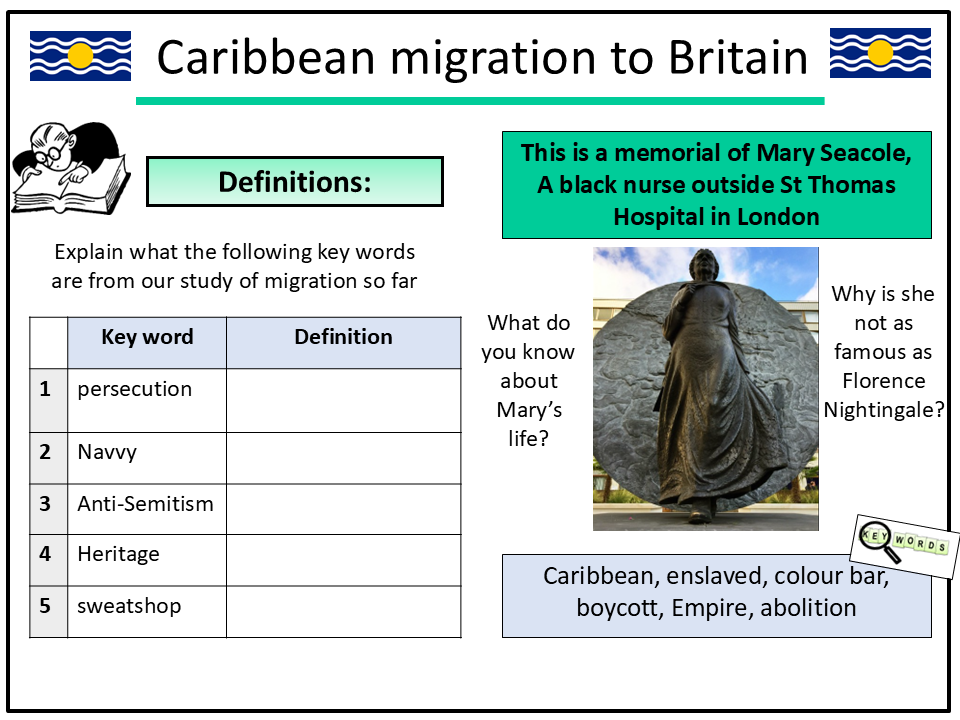


Migration Nation
The aim of this lesson is to assess which individuals from the Caribbean had the greatest impact on British society before the Windrush generation.
This lesson is therefore the first part out of two focusing on Caribbean migration to Britain.
I have selected four individuals to discuss, address, highlight and evaluate: Mary Seacole, Mary Prince, Harold Moody and Walter Tull.
Each character is assessed using information given on their contribution to Britain, from autobiographies to sport, to medicine and changes in the law. Ultimately using some select criteria, students have to make a judgement on who had the biggest impact upon Britain at the time.
There are video links, source analysis as well as literacy and extended writing tasks on each person.
The lesson comes in PowerPoint format and can be changed and adapted to suit.
The lesson is differentiated, fully resourced and includes suggested teaching strategies.
Something went wrong, please try again later.
This resource hasn't been reviewed yet
To ensure quality for our reviews, only customers who have purchased this resource can review it
to let us know if it violates our terms and conditions.
Our customer service team will review your report and will be in touch.